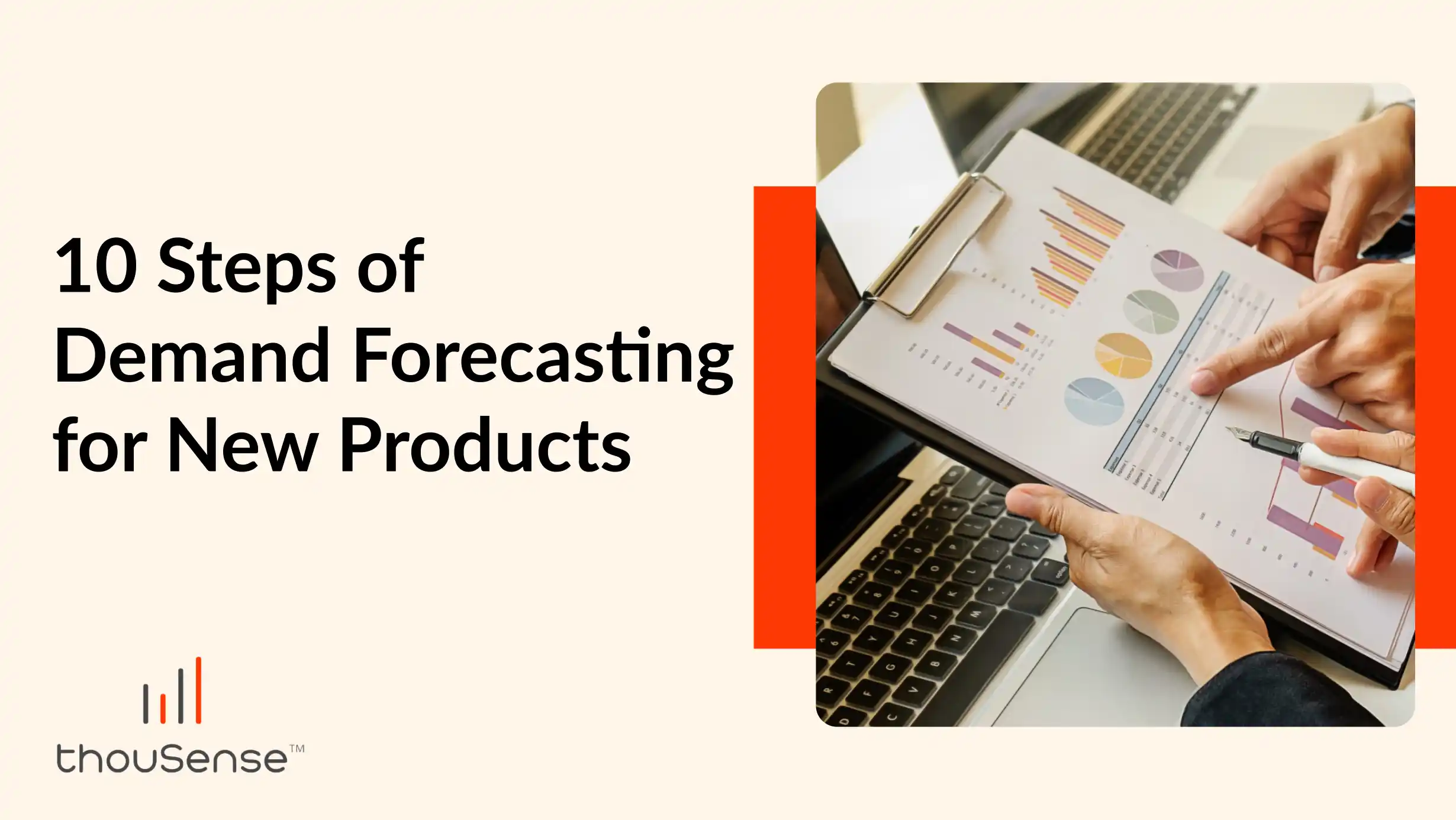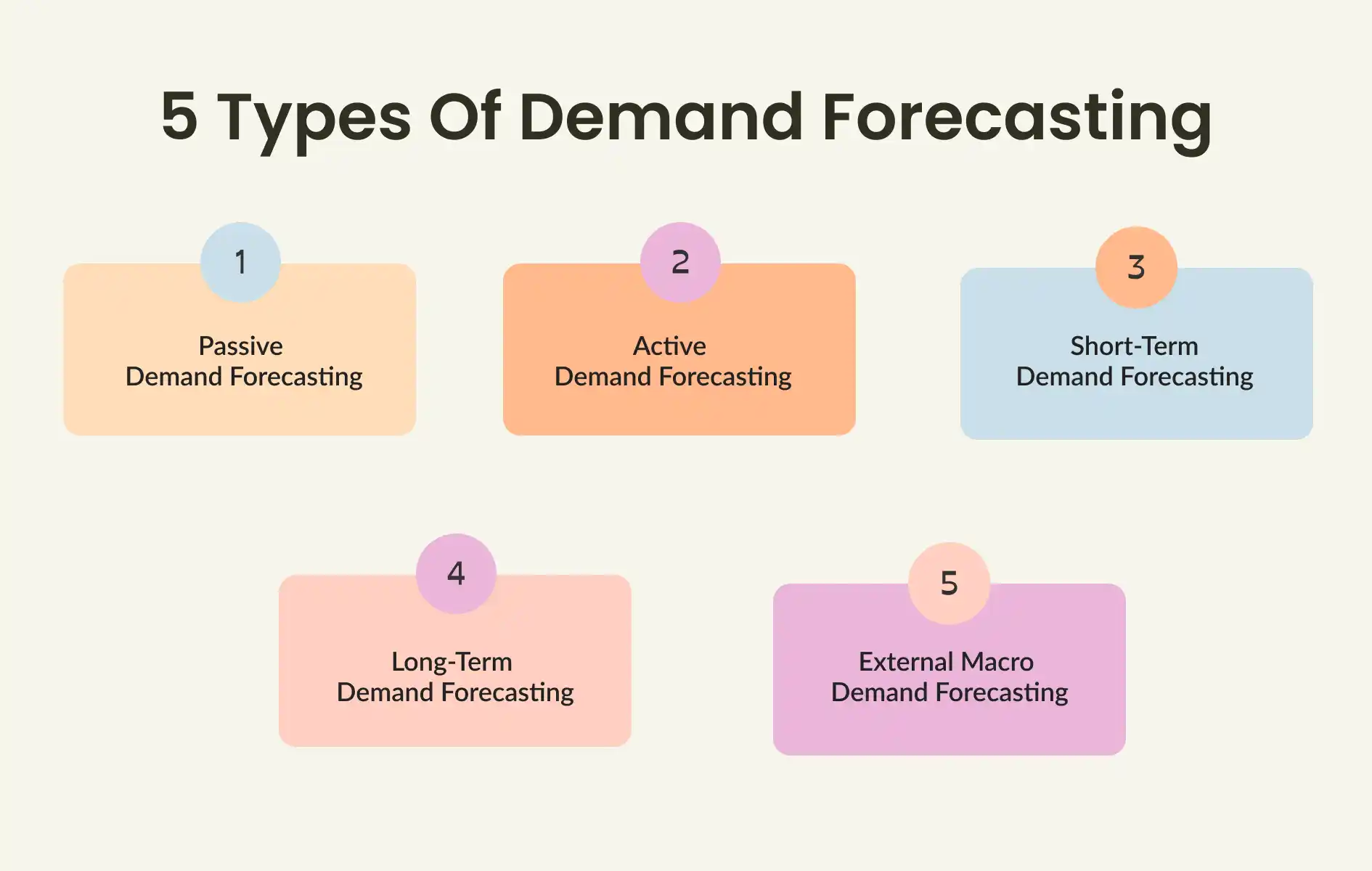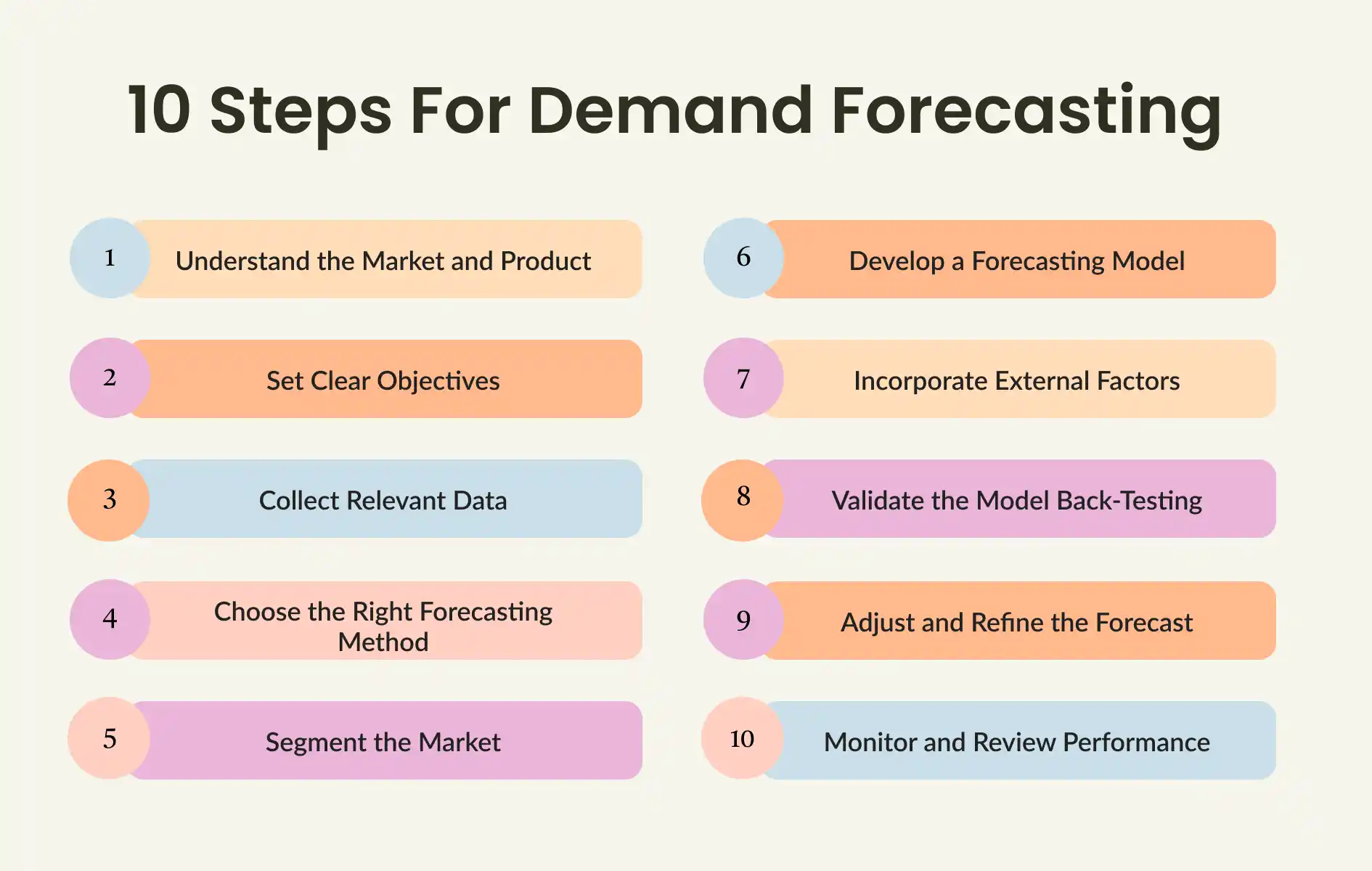10 Steps of Demand Forecasting for New Products | thouSense

Accurately predicting consumer demand for new goods and services is essential for corporate success in today's competitive market. By anticipating and satisfying consumer needs, businesses can lower the risk of loss in stock and increase customer satisfaction. How can it be done? It can be done through the use of a strategic approach to demand forecasting.
What is Demand Forecasting?
Demand forecasting is the process of anticipating future consumer demands for a product or service. It involves analyzing historical data, market trends, and external factors to estimate future sales and optimize inventory management, supply chain operations, and business strategies. There are a few techniques like statistical data analysis, machine learning and qualitative methods. These techniques help to create and collect refined data. If demand forecasting is done effectively it helps businesses in many ways. Such as making calculated decisions, and meeting customer demands with efficiency.
Importance of Demand Forecasting
For various businesses, demand forecasting is important. It is because it helps in strategic planning and calculative decision-making. Businesses may manage stock levels, reduce expenses, and improve customer satisfaction. This can be done by guaranteeing product availability by precisely projecting future customer demand. In addition to that, it aids in the efficient distribution of resources. While reducing the possibility of overproduction or stockouts.
Demand forecasting also helps with budgeting and financial planning, which helps companies stay competitive and react quickly to market changes. In the end, it helps with increased operational effectiveness and sustained corporate expansion.
5 Types of Demand forecasting
To anticipate future customer demand, demand forecasting is of multiple types. These types help in refined business strategies and management. Combining all these types of forecasting businesses can make a huge difference among all others. This combination will help them make informed decisions. The following are the 5 different types of demand forecasting:

1. Passive Demand Forecasting
Using past sales data, passive demand forecasting makes predictions about future sales. The prediction is done without statistical techniques or research on economic trends. Ideal for companies with consistent sales trends.
2. Active Demand Forecasting
Forecasts demand by considering market developments. It can also be done by competitive environments and aggressive growth plans. Usually used by newly established and expanding businesses.
3. Short-Term Demand Forecasting
This method informs daily activities, like stock planning for promotions. By concentrating on a brief window of time. It is frequently used in tandem with estimates for the longer term.
4. Long-Term Demand Forecasting
Used to determine production capacity, annual patterns, and seasonality over a longer time frame than a year. It is vital for determining development paths and scheduling capital expenditures.
5. External Macro Demand Forecasting
It analyzes past shipment data and economic indicators, among other macroeconomic data, to predict demand. This technique is used by companies to optimize logistics and distribution work.
The 10 Steps for Demand Forecasting
Demand forecasting helps in predicting the future customer demand for new products. This involves a combination of both qualitative and quantitative methods. The following are the 10 detailed steps to do so:

1. Understand the Market and Product
A thorough market research is conducted to understand the market. Further, this market research helps us understand the market environment, target audience and competitive landscape. It further helps in analyzing the product. It analyzes the features, benefits, and unique selling points (USPs) of the product.
2. Set Clear Objectives
Demand forecasting helps in establishing clear objectives. This includes forecasting the sales volume, market share, or revenue targets. Also, such a determination could be either monthly, quarterly or annually.
3. Collect Relevant Data
Demand forecasting also helps in gathering historical sales data. Such data could be of similar products or product categories. Apart from that, it also focuses on consumer behaviour, market trends, and economic indicators.
4. Choose the Right Forecasting Method
Forecasting demand uses expert judgment. It further uses market research and the Delphi method. This is used for new products where historical data is limited. It further applies statistical models and ML techniques. This helps in discovering any existing historical or related data.
5. Segment the Market
Demand forecasting further understands the market by segmenting it. This division is done based on demographics, psychographics, and behaviour. It also identifies different product variants and their potential demand in the market.
6. Develop a Forecasting Model
Forecasting massively helps in developing a model. This includes time series analysis, regression models, causal models, etc. This model is created using the available data. Incorporating expert input helps in improving accuracy.
7. Incorporate External Factors
Here, incorporating external factors includes economic indicators, seasonality and marketing conditions. Economic indicators include variables like GDP growth, inflation, and employment rates. Seasonality involves seasonal variations and trends specific to the industry. Market conditions on the other hand involve changes in market conditions. This further broadens up to new regulations, technological advancements, or shifts in consumer preferences.
8. Validate the Model Back-Testing
You can always use historical data for forecasting demand. This data will help in testing the model's accuracy. It is mostly done by comparing predicted values with actual outcomes. Also, it is suggested to evaluate the model under serval conditions and assumptions.
9. Adjust and Refine the Forecast
Demand forecasting requires continuous improvement. It should be based on new data, market feedback, and performance metrics. Experts shall help you to review and provide insights for refining the forecast.
10. Monitor and Review Performance
Keep a proper track of your performance. This will easily help in identifying and rectifying discrepancies. Also, keeping a feedback loop can be extremely efficient. This can help you to provide clear insights into loopholes. Thereby, helping you track errors and prevents from repeating the same.
Conclusion
Accurate demand forecasting entails setting goals for new items. It further gathers and evaluates data by choosing the best model. Also, it confirms and verifies estimates, and iteratively improves the procedure. These actions guarantee accurate information, which supports companies in cost reduction, inventory optimization, and successful customer service.
FAQs
Q1. Which demand forecasting method is best suited for new product development?
Answer: The substitute method and the evolutionary approach are considered to be the best demand forecasting method. However, the buyer’s approach, and sales experience approach could also be considered. These approaches offer a thorough understanding of market trends. Further, these are the most preferred by customers and hence are the best.
Q2. How can you forecast demand for a new product which has not been sold before?
Answer: In order to predict consumer demand for a new product, market trends, surveys, expert opinions, and small-market testing of the product are all necessary. A combination of these techniques improves forecasting accuracy and helps anticipate future demand.
Q3. How to forecast demand without historical data?
Answer: Use expert opinions, test marketing, and market research to estimate demand in the absence of historical data. Utilize customer surveys and competitive studies to acquire information, and use qualitative forecasting techniques to make accurate predictions about future demand.
Q4. What is the period of demand forecasting?
Answer: The period for demand forecasting is not fixed. It will vary based on the type of business. As businesses are categorised into short-term, medium-term and long-term. For the short-term, it ranges between a few weeks to a year. For the medium-term, it ranges from one year to two years. And, for the long term, it is beyond two years.
Q5. What are the 5 basic steps of demand forecasting?
Answer: Demand forecasting steps are supported by analysis of the factors while evaluating the results and their accuracy. The basic steps in demand forecasting include:
- Data collection based on past sales
- Data analysis
- Model Selection
- Forecast Generation
- Reviewing and adjusting the analysis
Q6. How to forecast demand for a new product?
Answer: Product demand forecasting can be made by using demand forecasting methods that include market surveys. They provide proper insights to the market with an understanding of detailed consumer behavior. Businesses can also opt the use of demand forecasting software for demand forecasting for new products.
Q7. What is the demand forecasting of new products?
Answer: Demand forecasting for new products is a process of encountering several challenges with multiple pitfalls. It involves analyzing the depths of markets with consumer behavior towards any new product. Aspects like user testing and feedback come into being while considering steps in demand forecasting for new products.